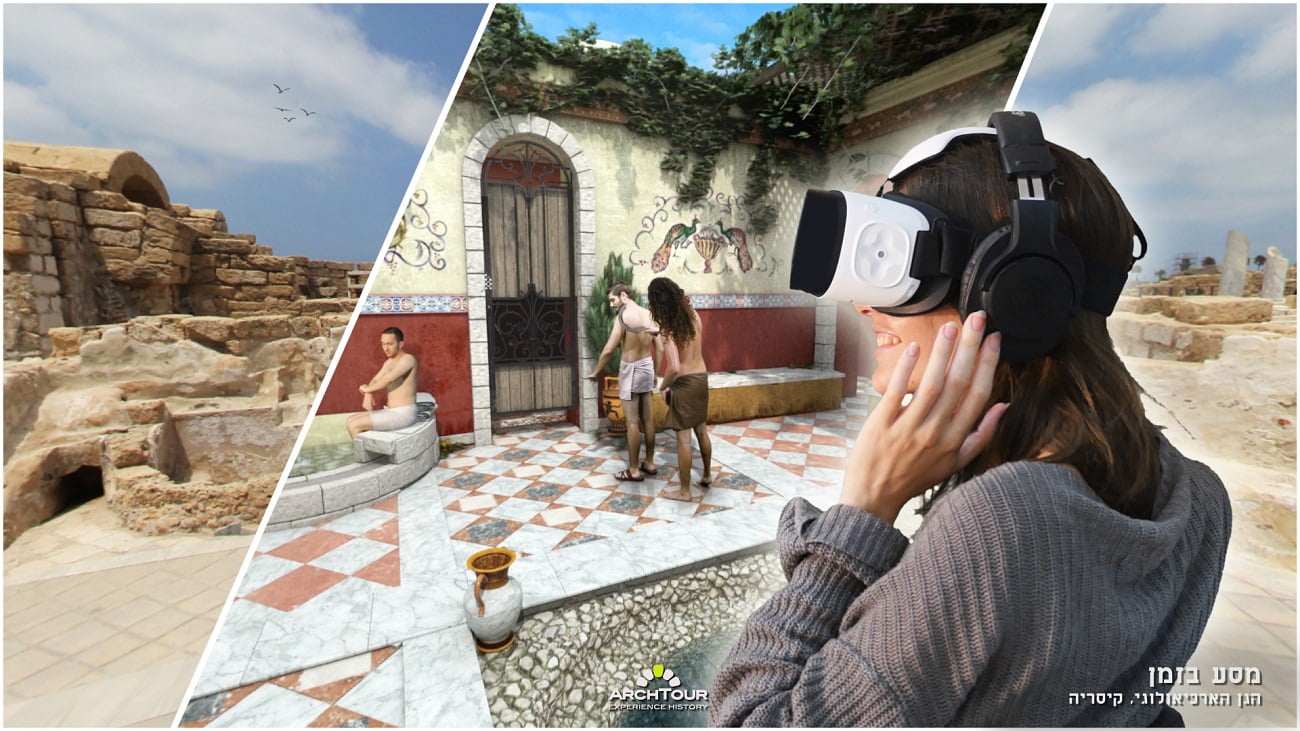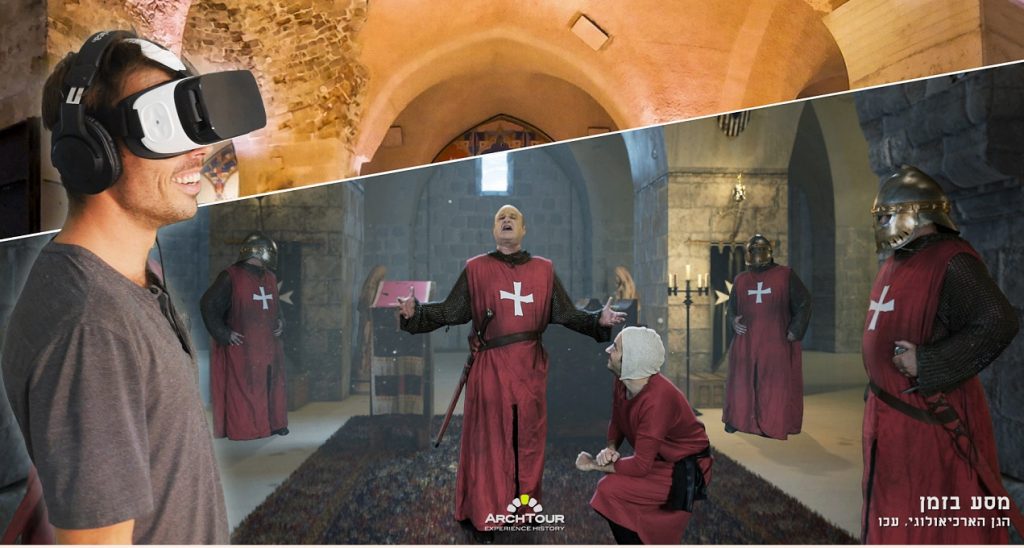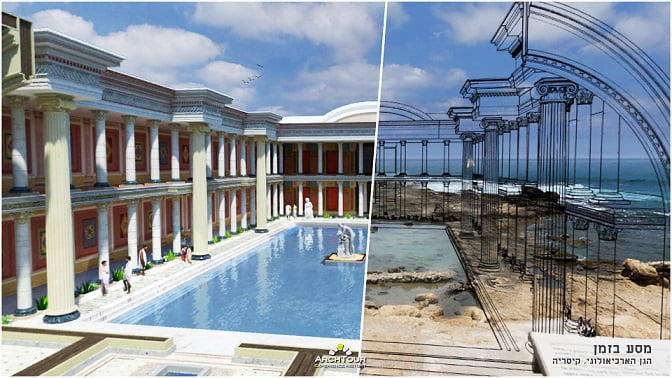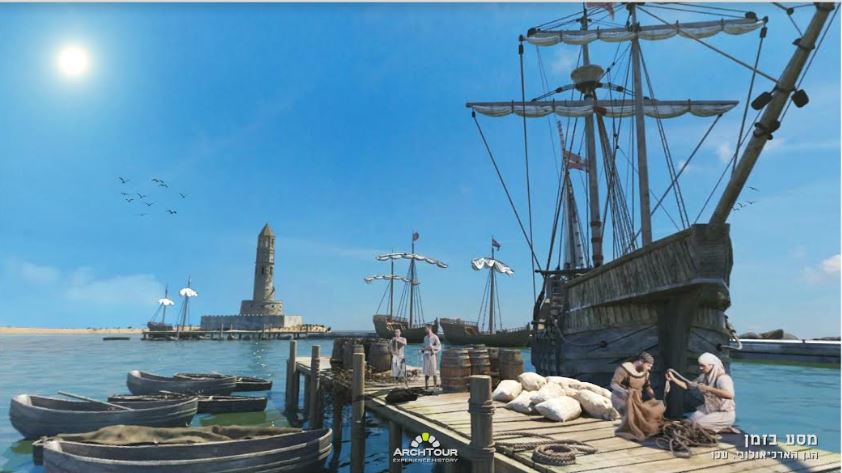Israel is a country steeped in historical and cultural significance, with researchers uncovering near-daily archeological finds, providing glimpses into its fascinating, complicated past. But what if we could actually see this rich past for ourselves? Thanks to some advanced Israeli technology and a pair of cutting-edge glasses, we now can.
Vortex, an Israeli company specializing in the virtual reality experience, has developed a virtual reconstruction technology that enables the public to “relive” momentous historical events in 360 multisensory fashion, while physically touring ancient ruins, archaeological sites, and spots with historical significance. Visitors to Israeli landmarks like the Old City of Caesarea, the Old City of Acre and the Western Wall Plaza in Jerusalem can fully immerse themselves in life as it was during the Roman and Crusader periods.
SEE ALSO: 3D Virtual Reality Therapy Could Help Repair Damaged Limbs, Israeli Study Finds
Through the “ArchTour” simulation, Vortex’s shortened term for “archeology tour,” the public will be able to travel back in time and gain a new historical perspective and understanding of what life was like in ancient times.
“Our unique technology includes archaeological reenactments of various periods, enabling visitors to experience the history of those sites as if they were standing there themselves,” Vortex CEO and founder Matanel Libi said in a statement. “As such, visitors who naturally find it difficult to imagine and assess the splendor of the times, based only on the remnants, will be able to travel in time to Caesarea and Old Acre and enjoy a multisensory and exceptional experience.
Libi said the effort is “based on the desire to present history to everyone and specifically the young generation.”
The Lod-based Vortex was founded in 2012 by former members of the IDF Technological Intelligence Unit. While their tech infrastructure is key to the evolvement of the company, the startup also hones in on providing accessible historical content in a tour setting, offering the general public a rich and multilayered VR experience that fully restores the most important details of archeological sites of the past.
“The idea was created based on a visit to Rome,” Business Development Manager Roi Ravitz tells NoCamels, “The real story is that some of us were visiting the country and Matanel [Libi] had the idea. We wanted to find a way to use our knowledge of virtual reality tech to enhance the experience of visiting a historical site.”
A team of historians, archaeologists, and art historians were hired by Vortex to conduct extensive research on the time periods showcased in the tour to make the virtual reenactments as authentic as possible, from the marble that was used for the floor to the details of Herod’s palace in Old Caesarea. The company sought a strong, advanced virtual visualization through its technology, focusing on the look of the local people, 3D structures, textures, colors, sounds and events.
Visitors can view the ships docking in Caesarea’s famous port and enjoy horse races at the eponymous Hippodrome stadium, along with thousands of virtual spectators. One can marvel at the lifelike reconstruction of the bathhouses, return to Herod’s palace, and walk around the city taking in the merchants and local residents.
Sign up for our free weekly newsletter
SubscribeThose who visit Knights Hall in Acre will be able to go back in time to Old Acre, an important Middle East trade center in its heyday. While the remains of the medieval Crusader buildings beneath the current existing Muslim town from the 18th and 19th centuries have been exceptionally preserved, taking in the city through the Vortex virtual reality experience means users will be able to watch the old knights’ train used for the crusades, mingle with local merchants, and study the architecture as it was then.
Vortex claims Caesarea National Park is the first archaeology park in the world to host a complete onsite, location-based virtual reality experience. The company launched its tour of Caesarea around the start of the Jewish holiday of Sukkot in mid-October; the VR tours in Acre began in August 2017.

Vortex Bath ArchTour, Courtesy
VR storytelling
Vortex also provides an easy management system for a tour guide, which allows him or her to integrate the virtual reality tech into guided storytelling while taking groups through the sites.
Visitors are given virtual reality headsets and 3D glasses to accompany their experience at the entrance of each site. The tour provides a 360-degree panoramic view of events, giving those visitors a chance to decide what details to focus on in their perspective of the period.
Experiencing Jerusalem’s Second Temple period in 3D
Prior to launching exclusive tours in Old Acre and Caesarea, Vortex first offered its virtual reality technology in a historical tour context through a partnership with the Western Wall Heritage Foundation in 2016. As part of the tour, visitors experience a 3D reconstruction of the Second Temple in its entirety.
Ravitz says the Vortex team had to consult with archeologists on the art and craftsmanship of the period, who advised them on the Temple’s details.
“This level of accuracy in visualizing the details of the archeologic sites in Jerusalem, as we did in Caesarea and Acre, is really unprecedented,” he says.
The Western Wall Foundation’s A Look Into The Past: Virtual Reality Experience tour is still on offer today, with sessions throughout the day in a number of languages including Hebrew, English, French, Spanish, Portuguese, Russian, and Chinese.
Related posts

Editors’ & Readers’ Choice: 10 Favorite NoCamels Articles

Forward Facing: What Does The Future Hold For Israeli High-Tech?

Impact Innovation: Israeli Startups That Could Shape Our Future






Facebook comments